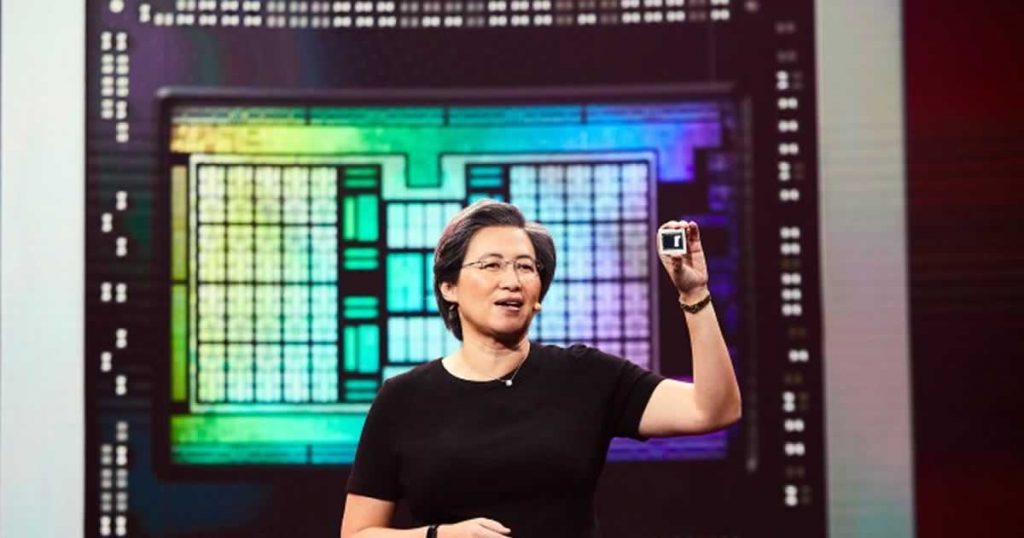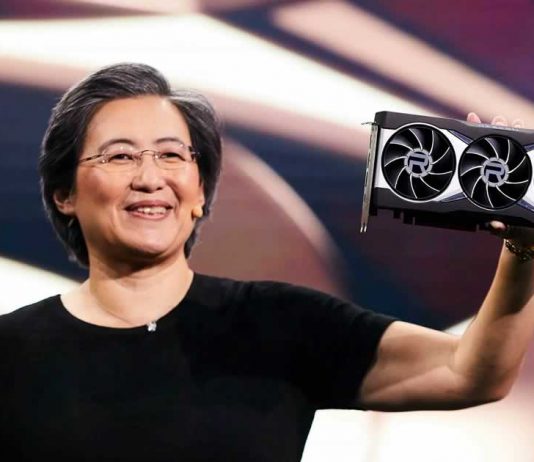AMD has introduced the new Radeon RX 6000 series GPUs, more precisely three graphics cards for gamers — Radeon RX 6800, Radeon RX 6800 XT, and Radeon RX 6900 XT.
According to the manufacturer, all three graphics cards based on RDNA2 technology compete with Nvidia’s Ampere generation video cards.
According to AMD’s own benchmarks, the Radeon RX 6900 XT will be positioned against $1499 Geforce RTX 3090 for $999. The Radeon RX 6800 XT is said to duel with $699 GeForce RTX 3080 for $649, and the Radeon RX 6800 is said to compete with the $499 GeForce RTX 3070 for $579.
All three cards use the Navi 21, which is produced by TSMC with an improved 7-nanometer manufacturing process and has a whopping 26.8 billion transistors. Unlike the Navi 10 of the Radeon RX 5700 XT, the Navi 21 has 80 compute units instead of 40 CUs, and there are also architecture improvements and the clock rate increases to over 2 GHz.

AMD no longer calls the new GPU generation Navi, but Navi 2X. The name says it all: RDNA2 products are said to be twice as fast as RDNA. AMD mentions a performance that is 1.8 × to 2.2 × better than the Radeon RX 5700 XT, but does not specify which RDNA-2 SKU it is exactly.
The new video cards are the first from AMD to support ray tracing technology, as well as a number of other solutions that will mark the games of the future, such as Variable Rate Shading, Sampler Feedback, and Mesh Shader, all features behind DirectX 12 Ultimate from Microsoft.
AMD has also ensured full support for DirectX’s DirectStorage API, and this will — similar to Nvidia’s RTX IO — squeeze performance from SSDs. Like Nvidia, AMD also offers a suite of technologies like Radeon Anti-Lag and Radeon Boost to reduce latencies and a revamped version of FidelityFX to improve image quality and offer something similar to Nvidia’s DLSS.
In terms of performance, AMD focused purely on rasterization-based games in the presentation and completely omitted ray tracing. It is important in the comparisons that the Radeon cards partly ran in the new Rage mode, a factory overclocking within the warranty. In addition, Smart Access Memory is a technology that draws a synergy effect from the Ryzen 5000 Zen 3 CPUs. Both of these together should increase the frame rate in 4K by 2 percent to 13 percent when a Ryzen 9 5900X is used.
The interface for the 16 GB GDDR6 video memory remains 256 bits wide but is supplemented by a so-called infinity cache. This 128 MB buffer should have extremely high bandwidth (approx. 1.1 TB / s) and hold data locally for the GPU — this is reminiscent of the eDRAM of the Xbox One and Xbox 360. In addition, AMD promises significantly better energy efficiency compared to a traditional 384-bit GDDR6 interface as used by the Geforce RTX 3090.
AMD Radeon RX 6800
The Radeon RX 6800 uses 60 active compute units and thus 3,840 shader units. The game clock is specified with 1,815 MHz, the boost clock with a maximum of 2,105 MHz. The graphics card has a 128 MB Infinity Cache and a 16 GB GDDR6 memory, which is equipped with 16 Gbps modules that clock accordingly at 8,000 MHz. The total board power is 250 watts.
AMD Radeon RX 6800 XT
The Radeon RX 6800 XT uses a total of 72 compute units and thus 4,608 FP32-ALUs. The game clock is 2,015 MHz; the maximum boost clock is a high 2,250 MHz. The Radeon RX 6800 XT also has a 128 MB Infinity Cache and a 16 GB GDDR6 memory with 16 Gbps. The TBP increases to 300 watts.
AMD Radeon RX 6900 XT
The Radeon RX 6900 XT, as AMD’s new flagship graphics card, relies on the full 80 compute units and thus 5,120 shader units. The game clock is 2,015 MHz, and the boost clock is up to 2,250 MHz so that the clock rates are identical to the Radeon RX 6800 XT. Even the fastest graphics card is supported by 16 GB of memory (16 Gbps) and a 128 MB Infinity Cache. AMD is not increasing the TBP either; it remains at 300 watts.
AMD Radeon RX 6000 Series Availability
The Radeon RX 6800 XT will be available for $649 and the Radeon RX 6800 for $579 on November 18, 2020, followed by the Radeon RX 6900 XT for $999 on December 8, 2020.
